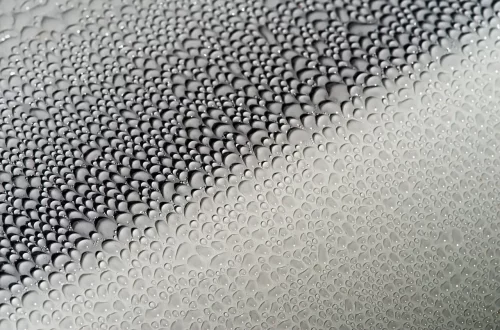
Chameleon Care Tips for a Thriving Tank Environment
Creating a thriving tank environment for chameleons requires a deep understanding of their unique needs and behaviors. These fascinating reptiles are not just visually striking; they are also complex creatures with specific habitat requirements. In captivity, the goal is to replicate their natural environment as closely as possible, ensuring they have everything they need to thrive.
Chameleons hail from various regions, primarily tropical and subtropical forests, where they live in trees and shrubs. Their natural habitats are characterized by high humidity, specific temperature gradients, and a variety of foliage that allows for climbing and hiding. Understanding these environmental factors is crucial for anyone looking to keep chameleons as pets.
Moreover, chameleons are known for their sensitivity to stress, which can arise from inadequate tank conditions, improper handling, or even the presence of other pets. As a result, creating a calm and suitable habitat is essential for their well-being. Their diet, hydration, and health are also closely tied to their environment, making it important to consider how each element interacts within the tank. Ultimately, a well-maintained tank will not only enhance your chameleon’s quality of life but also allow you to enjoy the captivating behaviors and colors these reptiles exhibit when they feel secure and healthy.
Understanding the Chameleon’s Natural Habitat
To effectively care for your chameleon, it is essential to understand its natural habitat. Chameleons are primarily found in tropical and subtropical regions, where they thrive in humid environments filled with foliage. When setting up a tank for your chameleon, aim to replicate this environment as closely as possible.
Begin with the tank size. A larger enclosure is recommended, as chameleons require space to move freely and explore. A vertical tank, typically 2 to 4 feet tall, is ideal because chameleons are arboreal creatures that spend much of their time climbing. The tank should also be well-ventilated to prevent stagnant air, which can lead to respiratory issues.
Next, consider the substrate. Although chameleons do not spend much time on the ground, the substrate should still be clean and safe. Options like reptile carpet or paper towels are easy to clean and prevent ingestion risks. Avoid sand or loose substrates, as these can cause impaction if ingested.
Adding plants is another critical aspect of creating a natural habitat. Live plants, such as pothos or ficus, not only enhance the aesthetic appeal of the tank but also provide hiding spots and climbing opportunities for your chameleon. Ensure that any plants are non-toxic, as chameleons are prone to nibbling on foliage. Artificial plants can also be used, but they should be placed strategically to avoid sharp edges that could harm your pet.
Incorporate branches and vines to create a three-dimensional space within the tank. Chameleons enjoy climbing, and providing various perches will help them feel secure and encourage natural behaviors. Ensure that branches are securely placed to prevent accidents.
Finally, consider the lighting and temperature gradients. Chameleons require both UVB and basking lights to thrive. The basking area should be kept warmer, around 85 to 95 degrees Fahrenheit, while the cooler end of the tank should be around 70 to 75 degrees. This gradient allows your chameleon to regulate its body temperature effectively.
Creating a habitat that mirrors your chameleon’s natural environment is vital for its health and well-being. By understanding the specifics of their habitat, you can ensure your pet is comfortable and thriving.
Temperature and Humidity Control
Temperature and humidity are two of the most critical factors in maintaining a healthy tank environment for your chameleon. These reptiles are ectothermic, meaning they rely on external sources to regulate their body temperature. Therefore, providing a proper temperature gradient within the tank is essential.
In general, a chameleon tank should have a basking area where temperatures can reach between 85 and 95 degrees Fahrenheit. This area is crucial for your chameleon’s digestion and overall health. The basking light should be positioned so that it does not overheat the entire tank but creates a warm spot for your chameleon to absorb heat.
The cooler side of the tank should offer a temperature range of 70 to 75 degrees Fahrenheit. This gradient allows your chameleon to move between warm and cool areas, helping them maintain their body temperature effectively. Using a reliable thermometer is essential for monitoring these temperature zones accurately.
Humidity levels are equally important for chameleons. They thrive in humid environments, typically ranging from 50% to 70% humidity. To maintain proper humidity, mist the tank daily with water. This not only increases humidity but also provides your chameleon with a source of drinking water, as they often prefer to drink droplets off leaves rather than from a bowl.
In addition to misting, consider using a hygrometer to monitor humidity levels consistently. If the humidity is too low, you may need to increase misting frequency or add a humidity-retaining substrate. Conversely, if humidity is too high, ensure that the tank is well-ventilated to prevent mold growth and respiratory issues.
It is also worth noting that chameleons can be sensitive to rapid changes in temperature and humidity. Gradually adjusting these levels and providing a stable environment will help minimize stress and promote overall well-being.
By carefully managing temperature and humidity, you create a comfortable and thriving environment for your chameleon, allowing it to exhibit its natural behaviors and colors.
Diet and Hydration for Chameleons
A balanced diet and proper hydration are essential for the health and vitality of your chameleon. These reptiles are insectivores, which means they primarily consume insects. However, it is crucial to provide a varied diet to ensure they receive all necessary nutrients.
Common food options for chameleons include crickets, mealworms, roaches, and silkworms. It is important to ensure that the insects are appropriately sized for your chameleon; larger chameleons can handle bigger prey, while smaller ones require smaller insects. Always source your insects from reputable suppliers to avoid introducing parasites or contaminants into your pet’s diet.
In addition to live insects, gut-loading is a vital practice. This process involves feeding the insects nutritious foods before offering them to your chameleon. By gut-loading, you ensure that the insects are packed with essential vitamins and minerals, enhancing the nutritional value of the meal. Foods such as leafy greens, fruits, and specialized insect diets can be used for gut-loading.
Another important aspect of your chameleon’s diet is supplementation. Since chameleons may not receive all necessary vitamins and minerals from their food alone, regular supplementation is essential. Use a calcium supplement without vitamin D3 for daily use and a multivitamin supplement once a week. For chameleons who do not have access to natural sunlight or UVB lighting, a calcium supplement with vitamin D3 may be necessary, but it is essential to consult with a veterinarian for specific recommendations.
Hydration is equally crucial, as chameleons can easily become dehydrated. Unlike many reptiles, chameleons do not drink from standing water. Instead, they rely on water droplets from misting their environment. Ensure you mist the tank at least once or twice daily, depending on the humidity levels, to provide adequate hydration.
Installing a drip system can also be beneficial, as it provides a constant source of water droplets for your chameleon. This method mimics natural rain and encourages your pet to drink more frequently.
In summary, providing a well-rounded diet and ensuring proper hydration are fundamental to your chameleon’s health. By focusing on nutrition and water intake, you can support your pet’s growth, vitality, and overall well-being.
Behavioral Enrichment and Socialization
Behavioral enrichment is vital for the mental and emotional well-being of your chameleon. In the wild, these reptiles engage in various activities such as climbing, foraging, and exploring their environment. Replicating these experiences in captivity is necessary to prevent stress and encourage natural behaviors.
One way to promote enrichment is by providing a diverse environment within the tank. As previously mentioned, incorporating live plants, branches, and climbing structures offers opportunities for exploration and exercise. Arranging the tank to create different levels and hiding spots allows your chameleon to engage in its natural instincts, such as hunting and basking.
Another aspect of enrichment involves interactive feeding practices. Rather than simply placing insects in a dish, consider using feeding tongs to present live prey. This method encourages your chameleon to hunt, stimulating its natural instincts and providing mental stimulation. You can also create foraging opportunities by hiding insects among the foliage, prompting your chameleon to search for its food.
Socialization is another essential component of your chameleon’s well-being, though it should be approached with caution. Chameleons are generally solitary creatures and can become stressed in the presence of other pets or even other chameleons. If you plan to introduce new animals, ensure that they are compatible and monitor their interactions closely.
Handling your chameleon should be done sparingly, as excessive handling can cause stress. When you do handle your pet, do so gently and calmly, allowing it to acclimate to your presence. Always wash your hands before and after handling to prevent the transfer of harmful bacteria.
In conclusion, providing behavioral enrichment and considering socialization carefully are essential for your chameleon’s happiness and health. By creating an engaging environment and respecting your pet’s solitary nature, you can ensure a thriving and fulfilling life for your chameleon.
In summary, caring for a chameleon involves understanding its unique needs and creating an environment that promotes health and well-being. By focusing on habitat setup, temperature and humidity control, diet and hydration, and behavioral enrichment, you can provide a thriving environment for your fascinating pet. Remember, this article is for informational purposes only and should not be considered medical advice. Always consult a veterinarian for any health concerns related to your chameleon.




